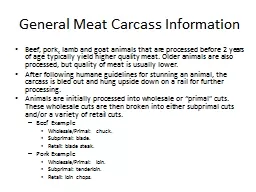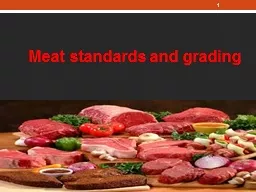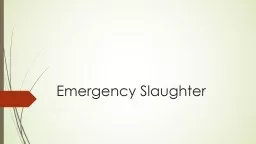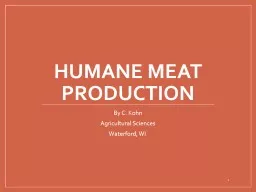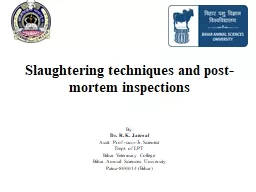PPT-General Meat Carcass Information
Author : giovanna-bartolotta | Published Date : 2016-05-18
Beef pork lamb and goat animals that are processed before 2 years of age typically yield higher quality meat Older animals are also processed but quality of meat
Presentation Embed Code
Download Presentation
Download Presentation The PPT/PDF document "General Meat Carcass Information" is the property of its rightful owner. Permission is granted to download and print the materials on this website for personal, non-commercial use only, and to display it on your personal computer provided you do not modify the materials and that you retain all copyright notices contained in the materials. By downloading content from our website, you accept the terms of this agreement.
General Meat Carcass Information: Transcript
Download Rules Of Document
"General Meat Carcass Information"The content belongs to its owner. You may download and print it for personal use, without modification, and keep all copyright notices. By downloading, you agree to these terms.
Related Documents

